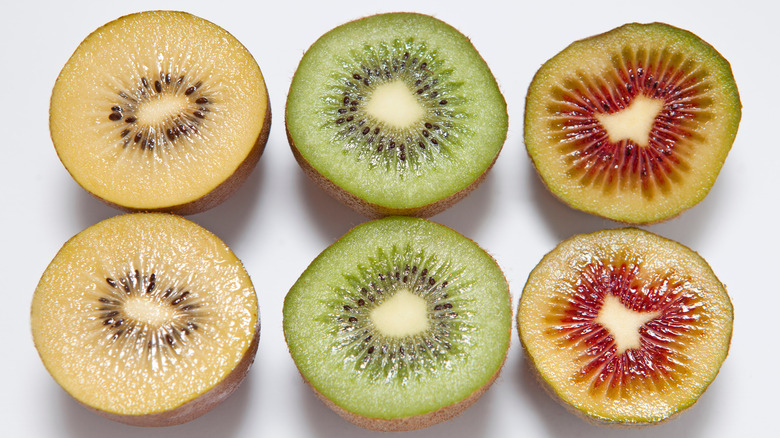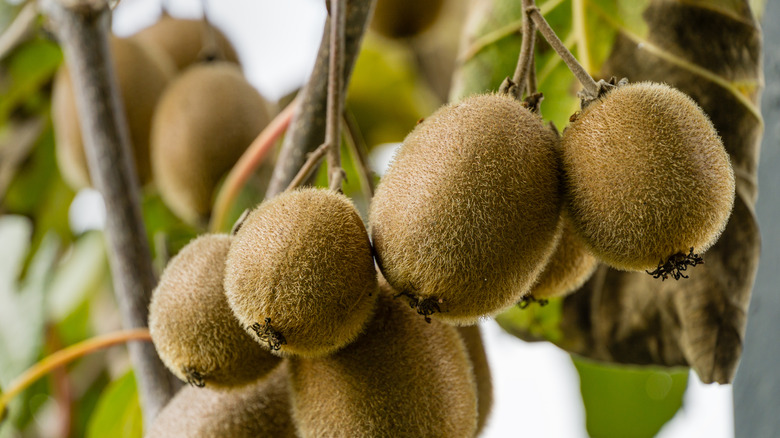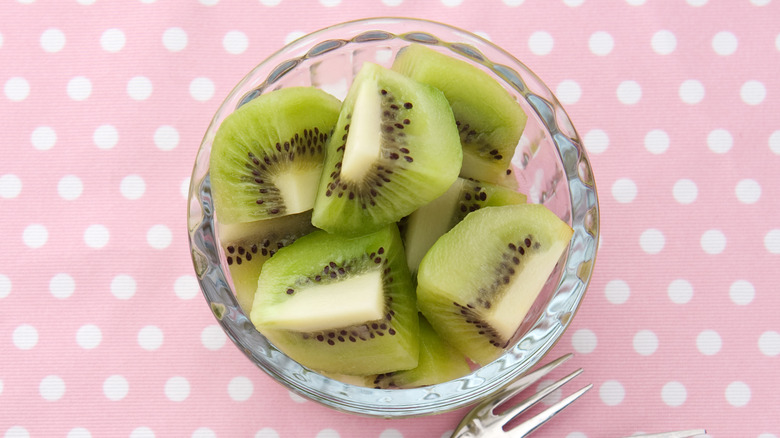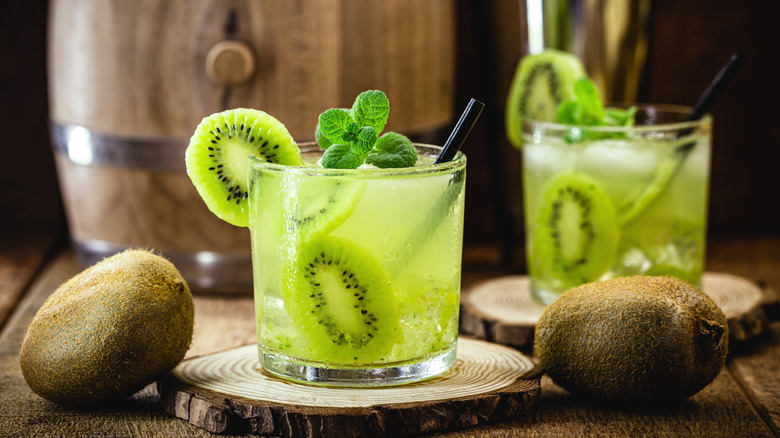Most Of The World's Kiwi Come From This Country
Fruit is nature's candy. They come in all different shapes, sizes, colors, and sweetness levels, making fruit the never-ending wheel of deliciousness we love and adore. Citrus fruits are perfect for squeezing into Moscow mules, Tom Collins cocktails, and frozen margaritas, whereas sweeter varieties are perfect for all kinds of fruit tarts, pies, and cake decorations, as well as beautiful garnishes. We are all familiar with staples like apples, grapes, bananas, and watermelon, but in comparison to these heavy hitters, Statista says that the kiwi, aka the Chinese gooseberry, produces a very small batch annually and often goes overlooked.
The kiwi fruit is round, fuzzy, and brown, revealing a gorgeous green color when cut open. The seeds inside the kiwi are small and black and appear in a circle around the heart of the fruit, and are edible, along with the skin (via WebMD). Overall, they are an attractive fruit with a wildly fun texture and flavor, and regardless of their name, they are grown primarily in the East.
The Chinese gooseberry
As its original name suggests, the Chinese gooseberry is Chinese in origin. According to Statista, mainland China still is the largest producer today, followed next by New Zealand and then Italy, but those other two countries come nowhere close to China's production. In 2020 alone, China produced over 2,230 metric tons of kiwis, making it the lead grower of that fruit.
The history of the kiwi
Britannica notes that kiwi, or Actinidia deliciosa, originated in mainland China and still grows there today, where they are farmed and sold for global consumption. The Royal Horticultural Society says that they still grow in the wild in China, and that there are records of the fruit being enjoyed by those who lived during the Song dynasty in China, but that it was primarily used medicinally.
But if you are sitting there and thinking to yourself that you've always associated the kiwi fruit with New Zealand, it's okay! There is a perfectly good reason you put the kiwi fruit with the island country. Alimentarium states that it was in 1904 that New Zealand took a liking to the fruit, which was then known as the Chinese gooseberry. It became known as the kiwi fruit in the 1950s, when it was rebranded to have the same name as the country's state bird in order to better market the product to the U.S. during the Cold War.
More about the kiwi
The kiwi fruit grows on beautiful vines, and according to Purdue University, they are harvested in different months all over the globe, making them available almost all year round on the market. While they are more commonly grown in the East, states like California in the United States also produce quite a few.
Unlike figs and apricots, the kiwi is most commonly eaten fresh, but like many fresh fruits, it comes with some fantastic health benefits. Healthline says that kiwi fruits are rich in antioxidants as well as vitamins C and E, but that's not all. Kiwis also contain insoluble and soluble fiber, which aid in digestion! When out shopping for these little guys, Oscar suggests that it's best to look for plump and soft fruits with no bruises or wrinkles; however, if you can only find firm-feeling kiwis, don't be afraid to scoop them up. Like bananas, kiwis will continue to ripen after being picked.



